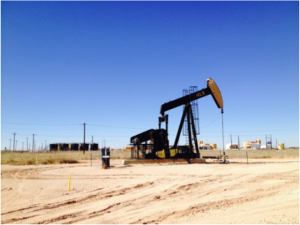Hydraulic Fracturing, also known as hydrofracking or fracking, injects water, sand, and chemicals into shallow shale deposits. This process cracks the shale to allow natural gas to escape.
 The opinions are varied regarding this new method of tapping into the earth’s stored energy. There are always pros and cons when extracting natural resources through fracking or various other methods. Indeed, advocates of fracking point out that this new industry has boosted America’s energy output and reduced most of North America’s natural gas bills for heating and cooking while creating numerous jobs and providing income to landowners with underground gas deposits.
The opinions are varied regarding this new method of tapping into the earth’s stored energy. There are always pros and cons when extracting natural resources through fracking or various other methods. Indeed, advocates of fracking point out that this new industry has boosted America’s energy output and reduced most of North America’s natural gas bills for heating and cooking while creating numerous jobs and providing income to landowners with underground gas deposits.
Some people have hailed fracking as the “new” coal industry for America. Mountains of stored natural gas have been found, but fracking can result in unintended consequences that effect the environment and local wildlife. Although the fracking industry began with more environmentally conscious policies than the coal mining industry, these unintended consequences are an important concern. Taking care of the planet we have been given, for us and for the future generations to come, should not be taken lightly.
Plastic Extrusion Technologies believes that to be good stewards of this world we must start by being informed. That only happens by asking the right questions (and getting their answers!) We present both:
What Are These Unintended Consequences That Come From Fracking?
The short answer: ground water is affected. With this natural gas exploration and production comes a risk of oil and chemical spills occurring. These spills can be detrimental to the environment. By oil and chemicals seeping into the ground, these spills may ruin various water sources.
What Do These Unintended Consequences Do To The Earth?
Why is ground water important? Ground water is by far the biggest concern because life cannot go on without water. Fresh water deposits are our earth’s secret weapon. Contaminated water supplies due to polluted wells and water tables affect the land and the ecosystem. The soil, once thick with nutrients, is not getting the correct sources of minerals from their water source underground. Poor soil causes vegetation to decrease and consequently wildlife to die off or move on to try to find a new ecosystem. Consequently as well, agriculture and safe water sources become jeopardized. It’s not a threat, it’s a fact – we don’t get more than one earth, and some unintended consequences are hard to reverse.
How Can We Stop These Unintended Consequences From Happening?
Is fracking just too big of a risk to continue as a viable energy source? Absolutely not! We can take action to prevent environmental contamination that can occur when dealing with fracking completion. This is the importance of Secondary Fracking Containment!
Existing regulations are in place to provide a safe storage and containment area for companies’ fracking equipment. The proper secondary containment system can help protect harmful elements from entering the environment and causing harm to surrounding land, their ecosystem, and communities.
What Is Secondary Fracking Containment?
According to Portable Tanks, a division of GEI Works President, “Spill containment products have been used for decades to hold and contain chemical and oil spills. Typically made out of hard plastic and heavy-duty materials, our flexible, collapsible, light weight, and easily movable spill berms are the perfect product to stay in compliance in static or remote locations for the oil, gas and mining industries. Our 40 mil HDPE spill berms are made for containment underneath frack tanks or used for pumps and other industrial equipment storage that requires secondary containment. These spill berms are a modern product to finish any field job successfully.”
We can push for new ways to find and utilize energy from this earth – but let’s do it responsibly with secondary fracking containment!
